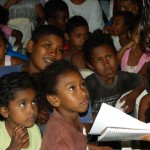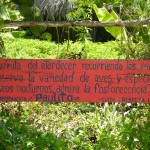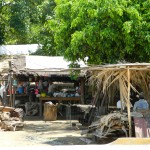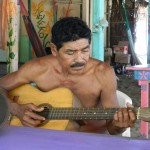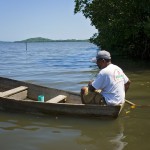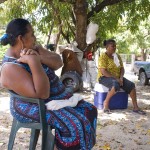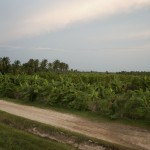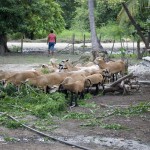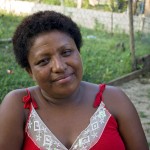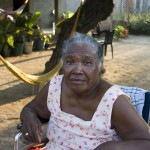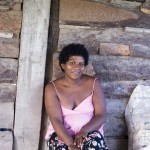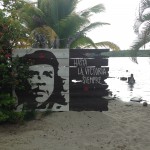African descendants in Oaxaca
The recent surge of excitement and energy that has gone into the movement for recognition of African Descendant’s in Mexico The two positions, local origin vs. diasporic connection, act as two poles which have seemed to define the political projects of recognition for black communities and the rights to be associated with these communities in Latin America, as well as globally. However, these two poles act to create a false dichotomy, which then acts to re-enforce the common binaries that we have come to accept as the intuitive frameworks that allow us to make sense of difference and national belonging (Hall 1997, Goldberg 2002). Bobby Vaughn (2009) argues that situating the experiences of Black Mexicans at either pole within this dichotomy is problematic, as the experience of Black Mexico, and I would argue Latin America in general, would have to lie somewhere in between. I am in partial agreement with Vaughn, and feel that this situating of the black experience at either pole is unproductive. However, the situating of the black experience somewhere in the middle of these poles still does little to help us explode the false dichotomy, which the acceptance of these poles helps to create in the first place. And, it is the acceptance of these poles that has led to the historical exclusion of the African descendant in Latin America, and the “New World” more broadly. These poles, local on the one side and a perception of the foreigner on the other, were useful as a colonial tool to make sense of particular subject positions and their respective values associated with the colonial hierarchy or broader racial economy (Jerry 2014, Jerry 2015) during the colonial moment. However, these poles were never completely useful to the African descendant due to the fact, as I have argued elsewhere (Jerry 2013), that blackness was so intertwined with Whiteness (i.e. Spanish, French, or British) that it was difficult to separate the two at any given moment. And, while the black/white binary allowed for the situating of indigenous peoples in relation to black or white it did not allow for African descendants to occupy a subject position of their own in the ways that it did for white or indigenous populations. Examples can be taken from a number of historical moments in which indigenous communities have been recognized as autochthonous and therefore have been give access to autonomy in a number of ways within their respective nation states. Examples can also be taken from the many independence movements that swept through Latin America in the 19th century, where locally born European descendants were able to politically resist diasporic understandings through the political construction of the Mestizo as a proxy for whiteness. This mostly rhetorical move solidified the perception of the native peoples of the Americas as foundational elements to the newly conceived nations, while simultaneously allowing locally born whites to use the history of the “civilizing” project in the Americas to tap into a legitimate sense of belonging within the newly formed American nation states. This rhetorical inclusion also served to exclude the African descendant in the Americas, as evidenced by the present popularity of the awkward term “Afro-Mestizo”, which, if we were to take the project and process of mestizaje seriously, would not be necessary. In the development of this term we can recognize that the project of mestizaje was truly a reflection of the original meaning of the word, as a racial product of the mixing of equal part “indian” and “Spaniard”. It is the many colonial binaries that continue to operate in the present, black/white, local/foreign/diaspora, which frame the ways in which we can go about interpreting the many images of blackness that continue to circulate as part of the process of meaning making that surrounds the politics of difference around race in Latin America, and the Americas more broadly, and creates a larger “spectacle of difference” as discussed by Stuart Hall (1997). These binaries continue to frame the subject and create lenses through which to read the black body as it is presented through images. In this way the black body can be fetishized (Mercer 1994, Hall 1997), as it is perceived to exist outside of the contexts in which it was produced. This is to say that there may be a conflict between the perception and ways in which we have theorized blackness and the everyday lived experience by which the blackness continues to be produced throughout the diaspora. This conflict can be seen in a number of ways, as diasporic representations become useful within local contexts to define the consumer of an image rather than the actual subject of the image. Or perhaps easier said, the subject of an image becomes the object on which the viewer inscribes meaning.[3] This process allows the consumer of the image to assume a monopoly on the tools by which to make meaning. I argue that in the case of images of blackness this process allows for the viewer to produce the subject in their own image rather than viewing the subject within the local contexts in which they were, and continue to be, forged.[4] The question that remains for me, is how can we read the black body within a local context in a way that does justice to what it means to “be” in any given time or geography? While this question has been brought up within the literature in general, the inability to provide an answer seems to have frustrated our attempts at inventing new paradigms through which to view, read, and ultimately make sense of the black body in present times. While the following photos undoubtedly reflect the position of the photographers, it is my hope that the viewer can attempt to step away from the privileged position behind the lens and attempt to look back through local histories and circumstances and for the ways in which African descendants in Mexico are making sense of their own social movement for recognition. The following photos are untitled so as not to attempt to frame the interpretation on the part of the viewer. (All photos by Mariana Palafox-Jerry) [1] The term by which to refer to African descendants within Mexico is presently under discussion. Many terms circulate within the circles interested in the subject of blackness in Mexico, both locally and abroad. However, a consensus has yet to be reached on how black communities in Mexico prefer to identify. Several terms used by locals and activists reference racial origins, such as Afro-Mexicano, Afro-Mestizo, or Afrodescendiente, while others directly reference phenotype and skin color, such as negro and moreno. Still others represent geography such as costeño. While neither of these terms has yet to be agreed upon as the official term for recognition, all of these terms circulate as ways to reference blackness in Mexico. [2] While many have argued that indigenous groups have themselves been racialized, indigenous groups have been recognized according to culture and their explicit cultural difference in most cases of official recognition. While this has been attempted for African descendants in Latin America, the issue of a racial logic used to define African descendants continues to complicate the strategies of recognition of these groups as “authentic” cultural groups. [3] Kobena Mercer has discussed this process in terms of fetishization of the black body by which the black male body is produced and interpreted as a sexual object to be consumed by whiteness. [4] Tony Gleaton has addressed this issue by making it explicit that his photography of “Black Mexico” was ultimately motivated and a product of his own politics and attempts to make sense of his understanding of “black Africa’s legacy in Mexico”.


